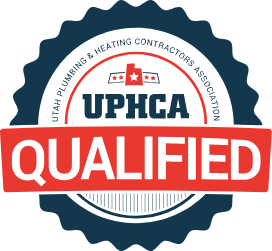With so much of your winter budget flowing toward heating, it’s understandable why you’d consider a more efficient system, like a heat pump. Is this truly better than a furnace, and what should you know if you’re going to depend on one? Keep reading to learn how both systems work and when both make more sense for your home.
How Heat Pumps Work
Heat pumps are a variation on the concept of an air conditioner. This unit doesn’t actually generate heat but transfers it using a refrigerant. An air conditioner transfers heat from inside your home to the air outside, while a heat pump transfers air from the air outside into your home.
It does this by managing the pressure of the refrigerant at various stages of the process. The refrigerant gets very cold when the pressure drops. This drop is achieved by restricting its flow before it reaches the outside coils to absorb the heat. In order for the process to work, the coils simply have to be colder than the outside air.
The system then transports the refrigerant inside. To release the heat, a compressor forces more of the refrigerant together, increasing its pressure. The system then runs air through a heat exchanger so that it can absorb the heat from the refrigerant. Afterward, it circulates the air back out into your home.
A heat pump, therefore, only needs electricity to run the system. There’s no need for a hookup to a fuel source since the system is just running a compressor and circulating refrigerant.
How Furnaces Work
Furnaces, on the other hand, generate the heat used to warm your home. It does this by burning fuel, which creates a hot exhaust. That exhaust runs through a heat exchanger before venting outside.
Like the heat exchanger for the heat pump, this is where the air circulating through the system absorbs the heat from the exhaust. In some high-efficiency models, the furnace may have two heat exchangers to enable it to absorb more of the heat.
There are different fuel sources, depending on your particular needs. Most new homes in non-rural areas run on natural gas, being it’s already plumbed into the home. Some other situations call for other fuel options, including either oil or propane, in which case you’ll have a fuel tank sitting outside. There are also electric furnaces, which use an electric resistance element to create heat.
Getting Heat Into Your Home
Regardless of whether you choose a heat pump or a furnace, the system has to push the heat into your home. As mentioned, air circulates through the system to absorb the heat and then warm your house.
To circulate the air, the system requires an air handler, which includes a circulating fan. For furnaces, this is usually built into the furnace unit. For heat pumps, that air handling unit is what sits inside, typically in about the same place, you would install a furnace. Being the air handler isn’t burning fuel, there’s no building code requirement for keeping the 30-inch clearance around it like there is for furnaces.
In both systems, the air flows to and from the system using a system of ducts. These ducts then lead to the registers around your home.
There is a different style of heat pump, known as a ductless mini-split system. In this model, there are several smaller air handling units throughout your home. These often mount to an exterior wall so that the refrigerant lines can easily reach the heat pump. Depending on the size of your home, a single outdoor heat pump may be able to handle all the air handlers for your home.
Efficiency Differences
Furnace heating efficiency is a rating of how much heat the system generates, compared to how much heat reaches your home. For newer model furnaces, this efficiency is a minimum of 80%, with high-efficiency models reaching as high as 98%. The remaining heat is lost in the exhaust.
Being heat pumps don’t generate heat, the efficiency is measured by looking at how many units of heat are delivered for every single unit of electricity. In the most advanced heat pumps, this may be as high as 500%. You’ll see this marketed as the COP or Coefficient of Performance. In this instance, it would be a COP of five for delivering five times as much heating as the electricity being consumed.
More important than understanding the specific efficiency ratings on these heating systems is what affects those ratings. As discussed, heat pumps only work when the outside air is warmer than the coils in the outside unit. The closer these two temperatures come together, the less efficiently the unit runs.
Effectively, this means that most heat pumps start losing efficiency at around 40 degrees Fahrenheit. At about 25 degrees, they become ineffective, and you’ll need another heating source. Being some nights around Las Vegas get well below freezing, you’ll need a secondary heating source.
Most heat pumps come with an electric resistance coil already installed in the air handling unit. However, this technology is the least efficient form of heating, leading to higher heating expenses.
If you’re concerned about long periods where the nighttime temperature dips below freezing, you might consider a dual fuel system. This is a heat pump that has a standard gas furnace in place of the electric resistance element. You won’t have to do anything to switch over to the furnace, being the system has sensors that automate the process. This ensures your system is always running the most efficient part of the system for the outside temperature.
Heat Pumps Pull Double Duty
One of the most popular features of a heat pump is that it functions as both your heating and cooling system. When you change your thermostat setting from heat to cool, it signals for the reversing valve to reverse the flow of the refrigerant.
This flow reversal changes where the high-pressure refrigerant is, with the heating function having high pressure inside your house. When cooling, the high pressure is at the heat pump unit outside.
Maintaining Efficiency in Both
Regardless of the system you choose, both will need regular maintenance to keep the optimal efficiency. Both systems will have an air filter to keep contaminants out of the system and away from the heat exchanger. This should be changed regularly, about every three months, for the smaller 1- and 2-inch filters. If you have a thicker filter, it may not need as frequent changing, so check your system’s manual for the recommended schedule.
Both will also need routine professional maintenance. For a furnace, this is once a year, usually in the fall. A technician will clean the heat exchanger and circulating fan, plus tighten fittings and electrical connections, and will test your system.
For heat pumps, you’ll want to have professional maintenance twice a year, in the fall and in the spring. Much of the heat pump maintenance is similar to that of a furnace. However, one of the additional tests is checking the amount of refrigerant in the system. Low refrigerant is a major cause of damage to heat pumps, let alone the loss of heating power.
People around Las Vegas have turned to Express Home Services since 2005 for their heating and cooling needs. Our team provides award-winning air conditioner and heating system installation, repair, and maintenance, combined with water heater and bathroom plumbing services. Call to schedule your appointment with one of our expert installation specialists to evaluate what heating system is best for your house today.







